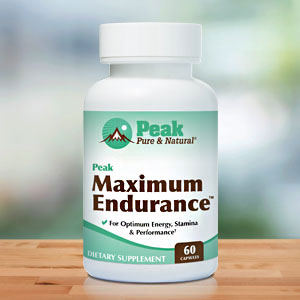Get Easy Health Digest™ in your inbox and don’t miss a thing when you subscribe today. Plus, get the free bonus report, Mother Nature’s Tips, Tricks and Remedies for Cholesterol, Blood Pressure & Blood Sugar as my way of saying welcome to the community!
When sleep apnea sets you up for aortic aneurysm

Obstructive sleep apnea (OSA) is a sleep disorder where a person stops breathing repeatedly throughout the night. More than just an annoyance causing sleep interruptions (and jabs from your partner for snoring), OSA has the potential to do serious harm to your health.
It can raise the odds of several cardiovascular complications including metabolic syndrome (METs), heart attack and stroke — just to name a few.
As if these risks weren’t concerning enough, a new study has added another life-threatening one to that list you should know about…
OSA and abdominal aortic aneurysms
Abdominal aortic aneurysms (AAA) occur when a major artery, the aorta, swells and potentially ruptures, causing life-threatening internal bleeding.
Previous research has hinted at a higher prevalence of AAA in patients with OSA. That prompted researchers at the University of Missouri (MU) School of Medicine and NextGen Precision Health to look further…
Using mouse models, they discovered that the intermittent hypoxia (low oxygen levels) caused by OSA increased the susceptibility of mice to develop AAA.
“Chronic intermittent hypoxia by itself is not enough to cause abdominal aortic aneurysms, but for a patient with obstructive sleep apnea who also has additional metabolic problems like obesity, our findings suggest it may help degrade aortic structures and promote aneurysm development,” says study author Luis Martinez-Lemus, a professor at MU.
To put it more simply, the study found that oxygen deficiency increased the risk of weakened cardiovascular tissue in the mice.
In OSA, the throat muscles relax and block the flow of air into the lungs, causing intermittent hypoxia. According to the study, the loss of oxygen triggers certain enzymes called MMPs. This increased enzyme activity can degrade the extracellular matrix, a sort of cell scaffolding network, thus weakening the aorta.
Neekun Sharma, the lead author of the study, notes that patients with AAA don’t notice any symptoms beyond some back and belly pain until the aneurysm bursts. Once that happens, the patient must be brought into surgery immediately to repair the aorta.
“Learning how these aneurysms develop can help us find ways to monitor or slow down their progression, especially for patients who have obstructive sleep apnea,” Sharma says.
OSA and METs can team up to increase AAA risk
If you suspect you might have OSA, see a doctor as quickly as possible. They can help you determine whether you have a mild, moderate or a severe case of OSA.
In mild OSA, doctors often recommend lifestyle changes to manage the condition. Weight loss is a great place to start, especially since it can also impact metabolic syndrome (METs).
METs is highly prevalent in patients with OSA. Some experts even suggest OSA should be considered an additional manifestation of METs, along with elevated waist circumference (or obesity), blood pressure, blood sugar, triglycerides and low HDL cholesterol. But not only is there a connection between OSA and METs, there’s also a connection between METs and AAA.
Previous research on human patients shows that the risk for AAA increases with each METs condition, except for elevated blood sugar. But even with that one exception, the highest risk for AAA was found in people who have all 5 components of METs.
A 10 percent loss in body weight can significantly improve OSA for people with excess weight or obesity and have a positive impact on METs as well.
Also consider:
- Regular physical activity
- Giving up or limiting alcohol intake (no more than one drink per day for women and two per day for men)
- Avoiding caffeine before bed
- Quitting smoking
- Sleeping on your side instead of your back
- Trying OTC nasal sprays or breathing strips to improve nighttime breathing
In the case of moderate to severe OSA, the most common treatment is a continuous positive airway pressure machine — the dreaded CPAP. The newest treatment is an upper airway stimulation implant that sends electrical signals to the tongue to keep the upper airway open during sleep.
Dentists can also help with oral appliances that can help maintain an open airway during sleep.
The most important take-home message is not to ignore symptoms of OSA, including daytime sleepiness, waking up during the night to gasp, choke, or urinate, morning headaches, dry mouth or memory problems. You could lose much more than sleep.
Editor’s note: There are perfectly safe and natural ways to decrease your risk of blood clots including the 25-cent vitamin, the nutrient that acts as a natural blood thinner and the powerful herb that helps clear plaque. To discover these and other secrets of long-lived hearts, click here for Hushed Up Natural Heart Cures and Common Misconceptions of Popular Heart Treatments!
Sources:
Obstructive sleep apnea may increase risk of abdominal aortic aneurysms — EurekAlert!
Chronic intermittent hypoxia facilitates the development of angiotensin II-induced abdominal aortic aneurysm in male mice — Journal of Applied Physiology
Obstructive Sleep Apnea — Cleveland Clinic














